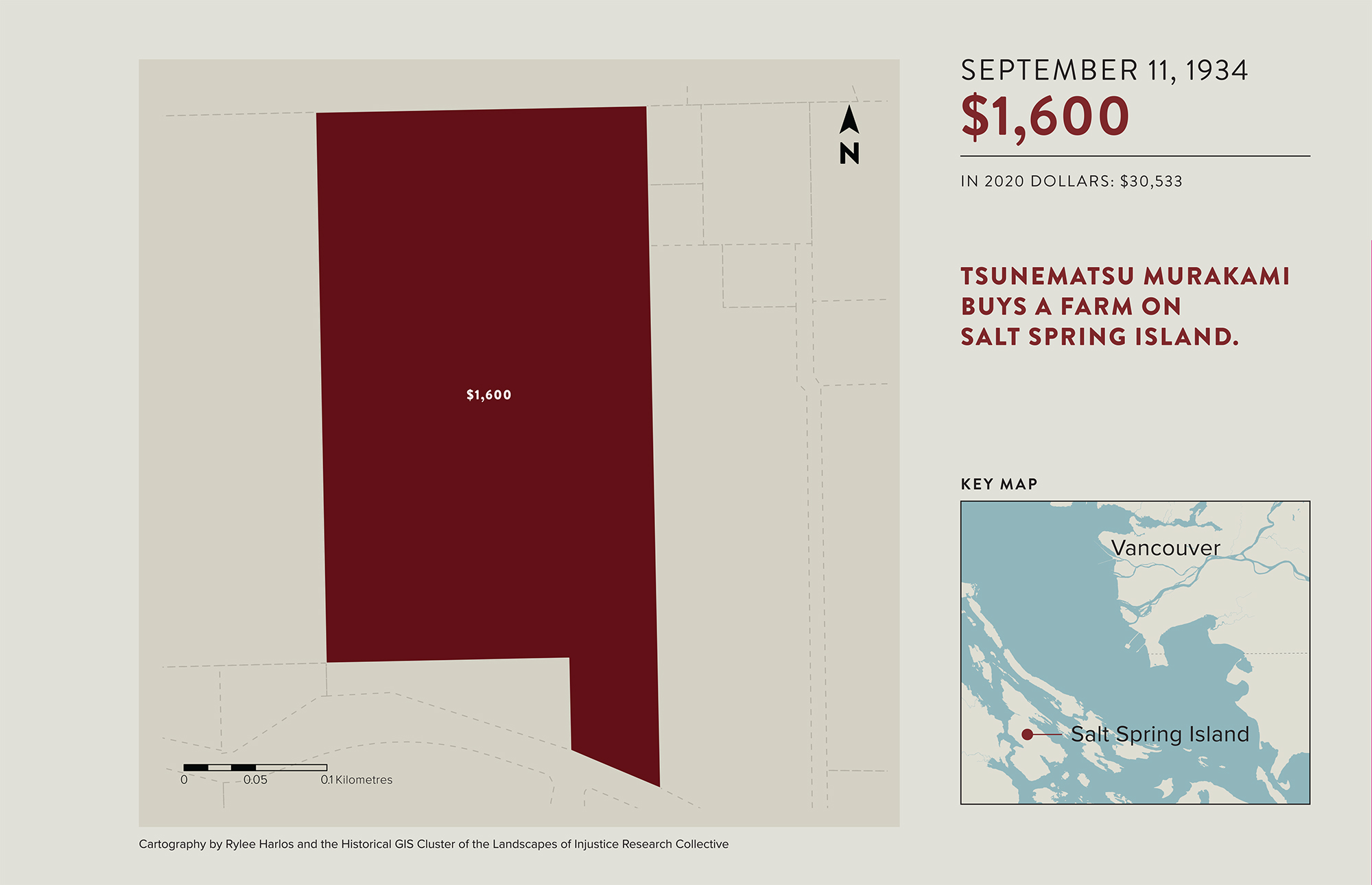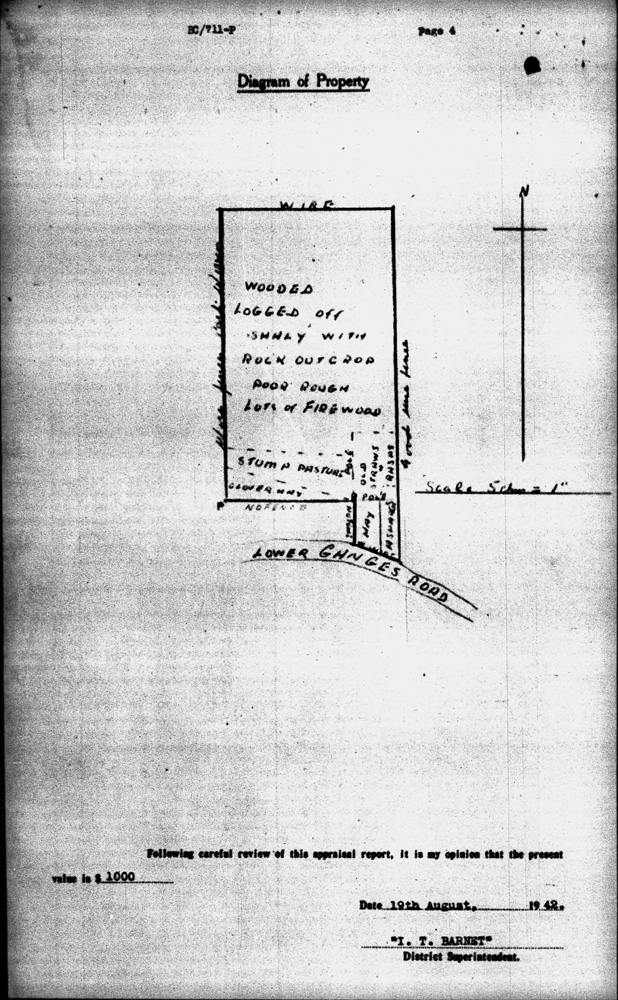Benefit and Loss

As he neared 60 years of age, Tsunetaro Murakami likely imagined that he would soon pass his Salt Spring Island property to his son, Peter. He had purchased his 27-acre farm in the early 1930s. Had it stayed in the family, the Murakamis might soon have been wealthy. Land on Salt Spring Island was about to skyrocket in value.
Instead, when Tsunetaro and Peter were interned in 1942, the government mismanaged and then sold the farm without their consent. They alleged that the Murakamis received “fair market value,” $1,162 ($17,000 in 2020 dollars).
Japanese Canadians quickly realized the inadequacy of such payments. In a further indignity, they were forced to use these funds to support their own confinement for years [Link to paying for internment], were prevented from reinvesting in the market during this time, and then forcibly relocated across the country or to Japan. With what little money they had left, Japanese Canadians had to start again.
Had they not been dispossessed, the Murakamis might have been enjoying their remarkable good fortune in the years after the Second Word War. By the mid 1970s – just one generation after the forced sale of the farm – the Murakamis’ lands sold for almost $3 million (2020 dollars). Had Peter been able to inherit even a 0.4 acre plot from his father, he would have, by the time of his own retirement, possessed a piece of land worth a quarter of a million dollars. Instead, he received just over $700 in 1946.
 Cartography by Rylee Harlow and the Historical GIS Cluster of the Landscapes of Injustice Research Collective
Cartography by Rylee Harlow and the Historical GIS Cluster of the Landscapes of Injustice Research Collective
 Library and Archives Canada, RG 117-C-3, file 3277
Library and Archives Canada, RG 117-C-3, file 3277
